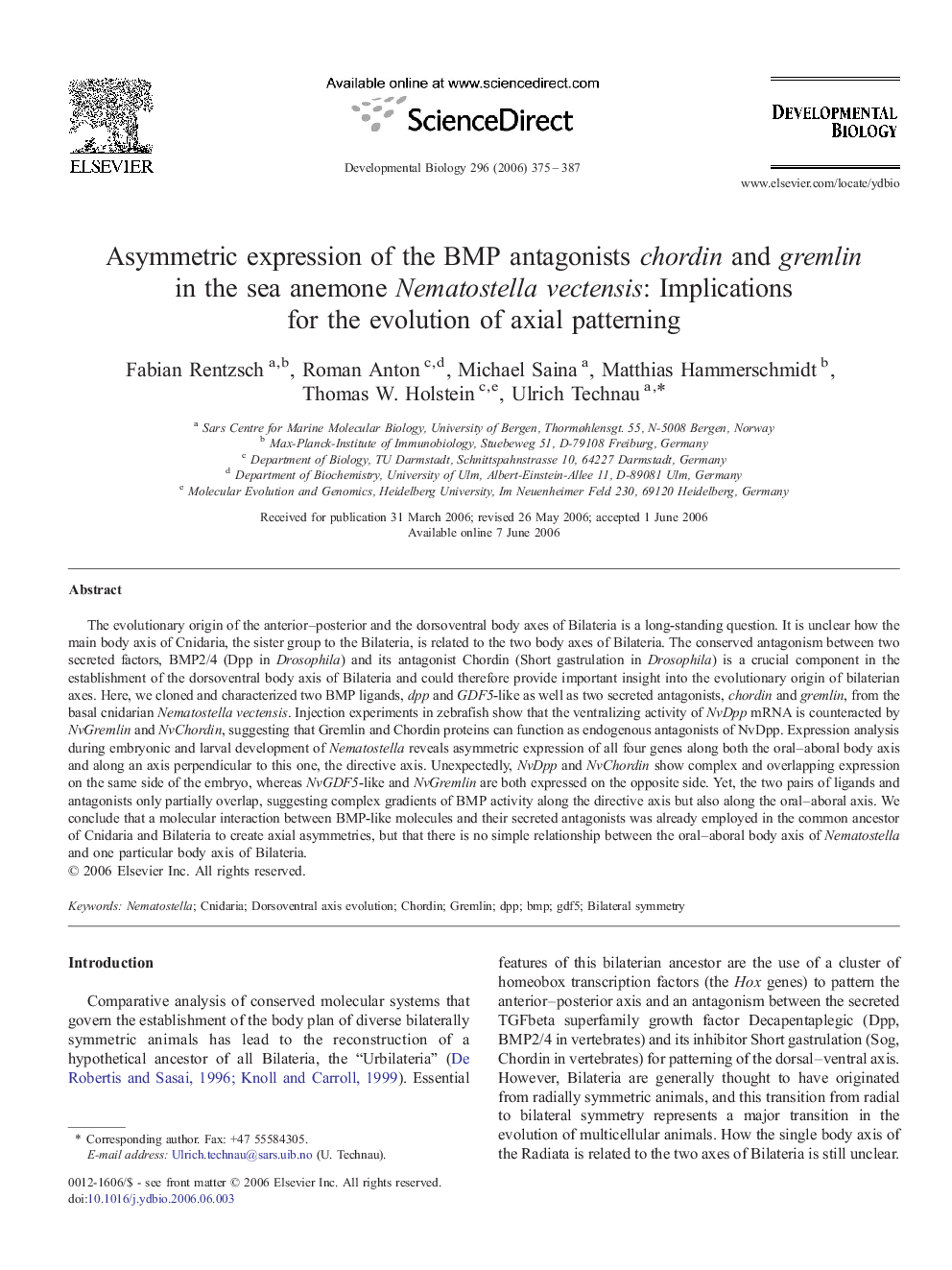| کد مقاله | کد نشریه | سال انتشار | مقاله انگلیسی | نسخه تمام متن |
|---|---|---|---|---|
| 2175828 | 1093854 | 2006 | 13 صفحه PDF | دانلود رایگان |

The evolutionary origin of the anterior–posterior and the dorsoventral body axes of Bilateria is a long-standing question. It is unclear how the main body axis of Cnidaria, the sister group to the Bilateria, is related to the two body axes of Bilateria. The conserved antagonism between two secreted factors, BMP2/4 (Dpp in Drosophila) and its antagonist Chordin (Short gastrulation in Drosophila) is a crucial component in the establishment of the dorsoventral body axis of Bilateria and could therefore provide important insight into the evolutionary origin of bilaterian axes. Here, we cloned and characterized two BMP ligands, dpp and GDF5-like as well as two secreted antagonists, chordin and gremlin, from the basal cnidarian Nematostella vectensis. Injection experiments in zebrafish show that the ventralizing activity of NvDpp mRNA is counteracted by NvGremlin and NvChordin, suggesting that Gremlin and Chordin proteins can function as endogenous antagonists of NvDpp. Expression analysis during embryonic and larval development of Nematostella reveals asymmetric expression of all four genes along both the oral–aboral body axis and along an axis perpendicular to this one, the directive axis. Unexpectedly, NvDpp and NvChordin show complex and overlapping expression on the same side of the embryo, whereas NvGDF5-like and NvGremlin are both expressed on the opposite side. Yet, the two pairs of ligands and antagonists only partially overlap, suggesting complex gradients of BMP activity along the directive axis but also along the oral–aboral axis. We conclude that a molecular interaction between BMP-like molecules and their secreted antagonists was already employed in the common ancestor of Cnidaria and Bilateria to create axial asymmetries, but that there is no simple relationship between the oral–aboral body axis of Nematostella and one particular body axis of Bilateria.
Journal: Developmental Biology - Volume 296, Issue 2, 15 August 2006, Pages 375–387